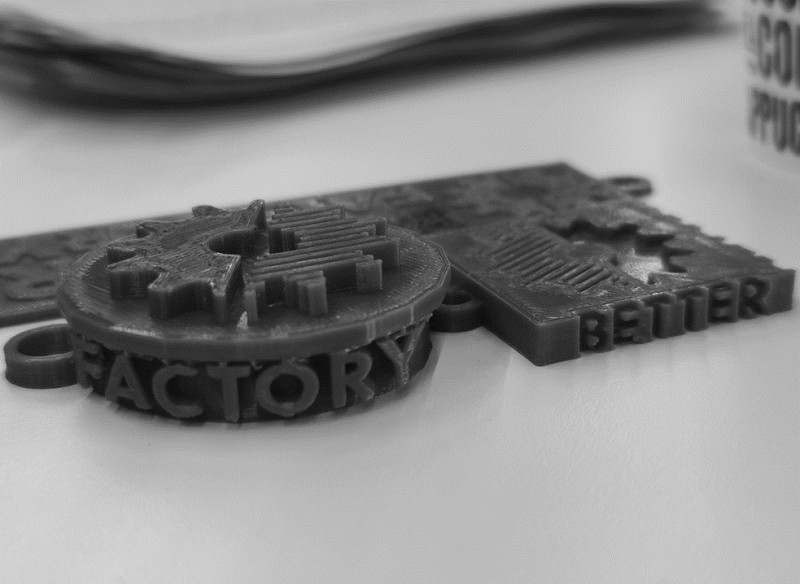When Marie Kondo enters in your factory, amazing things happen
Increasing quality while decreasing cost is a process that is not only reserved to large companies, SMEs can also benefit from applying methodologies that can make evolve their business.
Simplicity, flow and balance are the keywords that define what seems to be another new and shiny marketing concept: Lean Manufacturing (LM) or Lean Production. Yet, history books but more recent source Wikipedia present the multinational automotive manufacturer Toyota as the philosophy creator. Back in the post-second world wartime while the United States of America and the rest of the world were struggling to rebuild, the company which was having trouble to get materials was applying the Japanese way-of-thinking to reduce waste, improve flow and increase productivity.
A philosophy of continuous improvement
In Japanese culture, Wa is a cultural concept meaning prioritising agreement and harmony over personal views. The value is about interdependence over independence, cooperation over dissent, and patience over resistance and is a guideline for all kind of interaction. To reach a system-wide efficiency, the Lean Manufacturing philosophy is looking for the entire value-chain to be harmonized, and not only a part of it, be the most performant. It is based on teamwork challenges. At the time that Toyota was running the Toyota Production System concept, there was no increase in employees’ number either new equipment added. When Ford was increasing the total output increase the profits, the Japanese automotive manufacturer was doing smaller batches in order to smooth production flow in the plant.
Reducing costs by reducing waste
So, what is this philosophy about? According to Takeshi Yoshida, Lean Manufacturing is not just about making a good product:
“It needs to be produced in a way that is not wasteful”.
The main idea of LM is to find processes and actions to reduce or eliminate Muda, which means waste but also taking into account the overburden, Muri and the unevenness, Mura in order to streamlining the production. The system improves quality and stability of the processes.
To seek this way of doing in the production process, the first thing to do is to identify the concepts of added-value, no added-value but necessary and waste that are the rest of activities that are not adding value to products. Here it is important to remind that the system is created first to create customer value. All the efforts are put to seek non-add value at all levels of the enterprise which can be found in defects, overproduction, waiting, not utilizing talent, transportation, inventory excess, motion waste and excess processing (DOWNTIME acronym). Each of those wastes can be avoided by applying 4 fundamental and interconnected principles:
1) Takt: the production rhythm meets with customer demand
2) Flow: smooth, uninterrupted flow
3) Pull: avoiding overproduction and inventory generation by using the production of the above phase in the production process
4) Zero defect: identifying errors or defects
There are several concepts and path to find the best way to improve productivity according to the LM. One of them is based on cleanliness and organization to organize work area: the 5S.
- Sort (eliminate that which is not needed)
- Set in Order (organize remaining items)
- Shine (clean and inspect work area)
- Standardize (write standards for above)
- Sustain (regularly apply the standards)
The continuous improvement philosophy is composed of many other tools seeking to reduce waste such as Kasban, a strategy where employees work together proactively to achieve regular or incremental improvements in the manufacturing process or Jidoka, design equipment to partially automate the manufacturing process (partial automation is typically much less expensive than full automation) and to automatically stop when defects are detected.
A shower of benefits
The system, based on teamwork challenge and Kaizen meaning change for better, has two pillars: continuous improvement and respect for people. The benefits that can emerge can be stunning: improved employee engagement and morale, reduced operating costs and improve safety. The “Toyota-way” also allows innovation opportunities, better distribution, positioning, productivity increment, high customer satisfaction, etc.
There are numerous cases of success in many sectors. Big companies such as Nike or Intel have been applying LM in their own factories but SMEs are also enabled to apply the philosophy. For instance, the Italian small size company studied in “Implementation of Lean Production in small-sized Enterprises” (Matt & Rauch, 2013) has employed LM methods to face predicted phase of the market cycle and started a project to improve the productivity rat. Wastes were identified when employees had to pick up the needed component themselves by leaving their work cell involving an enormous waste of time. Also, each team was responsible for the quality of the own process steps with the elaboration of standardized instructions. The application of those processes allowed the SME to increase the productivity of more than 25% overall products.
To conclude, Lean Manufacturing is a methodology focused on minimizing waste within manufacturing systems while simultaneously maximizing productivity.
References
More about Lean Manufacturing here and here
Learn to apply Lean production here
Know about Toyota success story
Marjorie Grassler, in-house consultant at Mobile World Capital Barcelona

